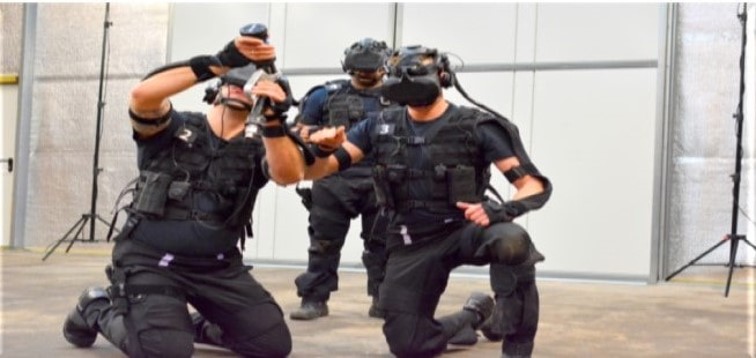 XR training. (Photo: HTX)
XR training. (Photo: HTX)
Today, when most of us experience Virtual Reality (VR) technology, it is usually through games like Beat Saber or Alien: Isolation. However, at Human Factors & Simulation Centre of Expertise (HFS
CoE), VR and other simulation technologies are put to good use to strengthen Singapore’s public safety.
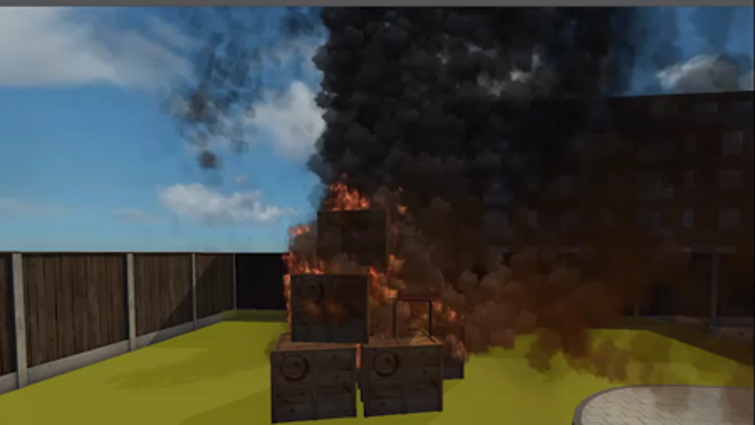 VR firefighting training. (Photo: HTX)
VR firefighting training. (Photo: HTX)
Mr Ying Meng Fai, the Director of HFS CoE, shared that their VR Firefighting Training and Assessment System uses VR to simulate fires for trainees to practise their firefighting skills. The system also uses equipment with haptic feedback to enhance the realism of the training. As the VR simulations offer a safe environment for the trainees, they will typically undergo VR training before upgrading to ‘live fire’ simulators.
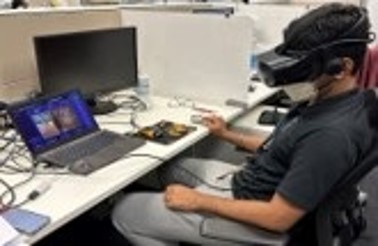 VR Cue Exposure Therapy. (Photo: HTX)
VR Cue Exposure Therapy. (Photo: HTX)
VR is also used in VR Cue Exposure Therapy, a proof-of-concept technology that was jointly developed by the Singapore Prison Service and HFS CoE to desensitise drug abusers. The system presents drug abuser with life-like simulations of scenarios where they are tempted with realistic drug cues and triggers. Their eye-tracking and heart rate data are monitored in real-time during the simulations, and the data will be used to shape their recovery programmes.
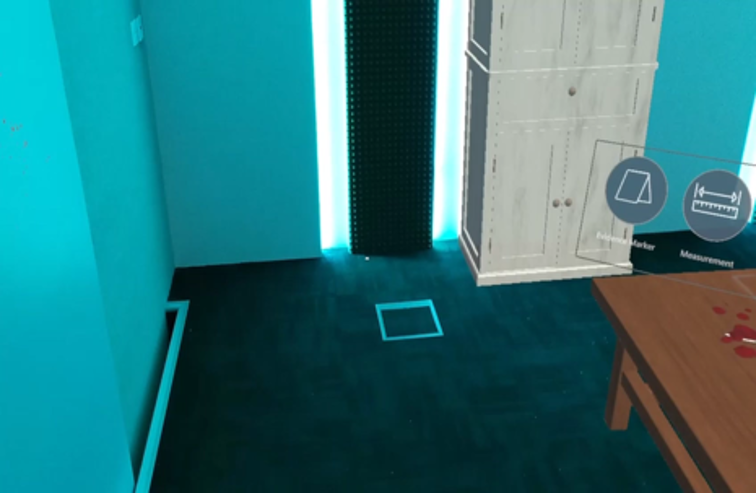 MR Bloodstain Pattern Analysis Simulation. (Photo: HTX)
MR Bloodstain Pattern Analysis Simulation. (Photo: HTX)
Closely related to VR is Mixed Reality (MR) where users can perceive their physical surroundings with virtual objects added in. Most people are familiar with MR through the popular Pokémon Go mobile game. Just as the game lets you “throw” virtual Poké Balls in the real environment to “catch” Pokémon, MR simulations allow users to manipulate virtual objects in the real environment. At HFS CoE, the MR Bloodstain Pattern Analysis Simulation creates realistic and configurable holographic crime scenes to train Crime Scene Specialists to analyse bloodstain patterns.
Apart from VR and MR, HFS CoE also uses Extended Reality (XR) for public safety training. By allowing trainees to interact with virtual objects in virtual environments, XR enables them to practise tasks in a safe and controlled setting, reducing the risk of errors or accidents. The trainees can receive real-time feedback and learn the proper procedures step by step.
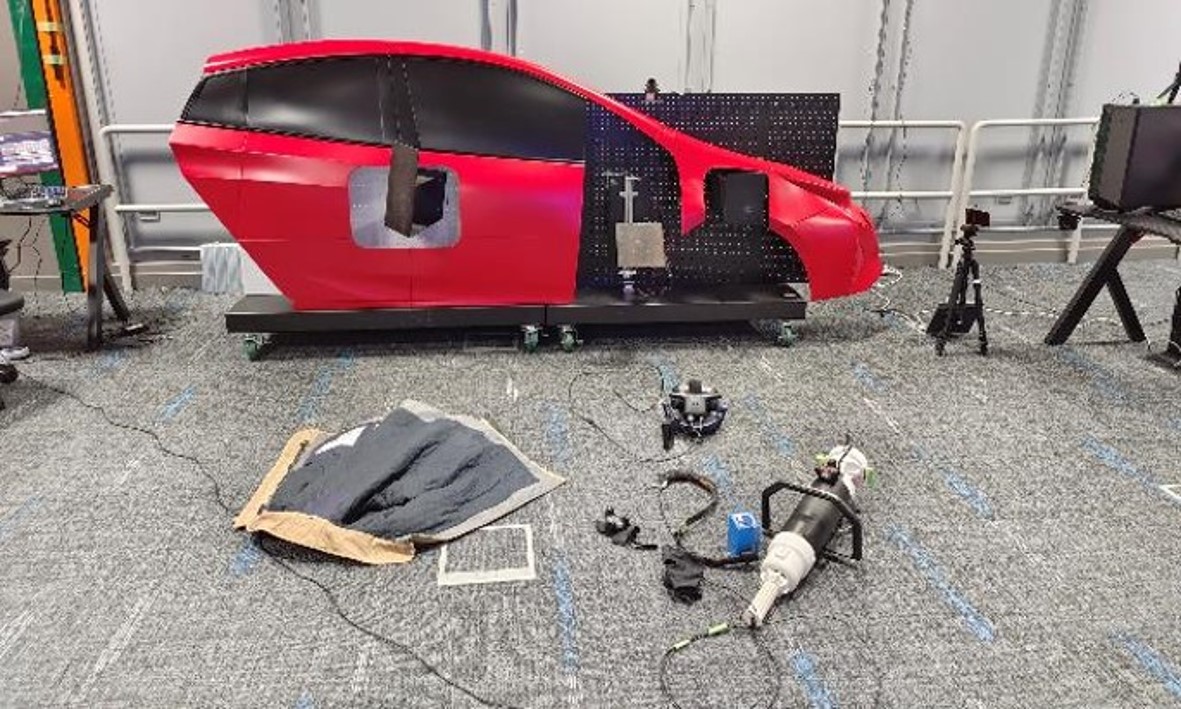 XR Road Traffic Accident and HazMat Training System. (Photo: HTX)
XR Road Traffic Accident and HazMat Training System. (Photo: HTX)
At HFS CoE, the XR Road Traffic Accident (RTA) and HazMat training system creates XR simulations to train officers to save lives in traffic and hazardous materials (HazMat) accidents. This system includes a multisensory suit that provides an immersive experience involving the senses of smell, touch, and heat. For RTA training, the trainees are also equipped with the physical simulation of a spreader cutter that contains sensors and magnets to provide realistic haptic feedback and reproduce the sensation of operating a real spreader cutter. This is paired with a physical mock-up of a vehicle frame that the trainees can practise working on with the simulated spreader cutter.
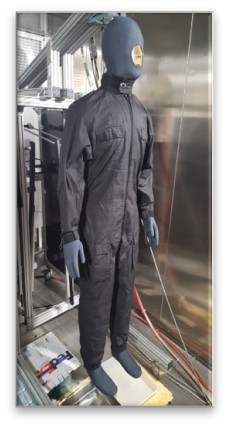 Thermal manikin. (Photo: HTX)
Thermal manikin. (Photo: HTX)
A different type of simulation instrument is the manikin. Where VR, MR, and XR tools create virtual environments and objects for users to work with, manikins are physical simulations of the human body which allow researchers to conduct experiments which would be too costly or risky to conduct on actual people. HFS CoE uses thermal manikins to test how humans will perform at different temperatures, for example, in firefighting situations.
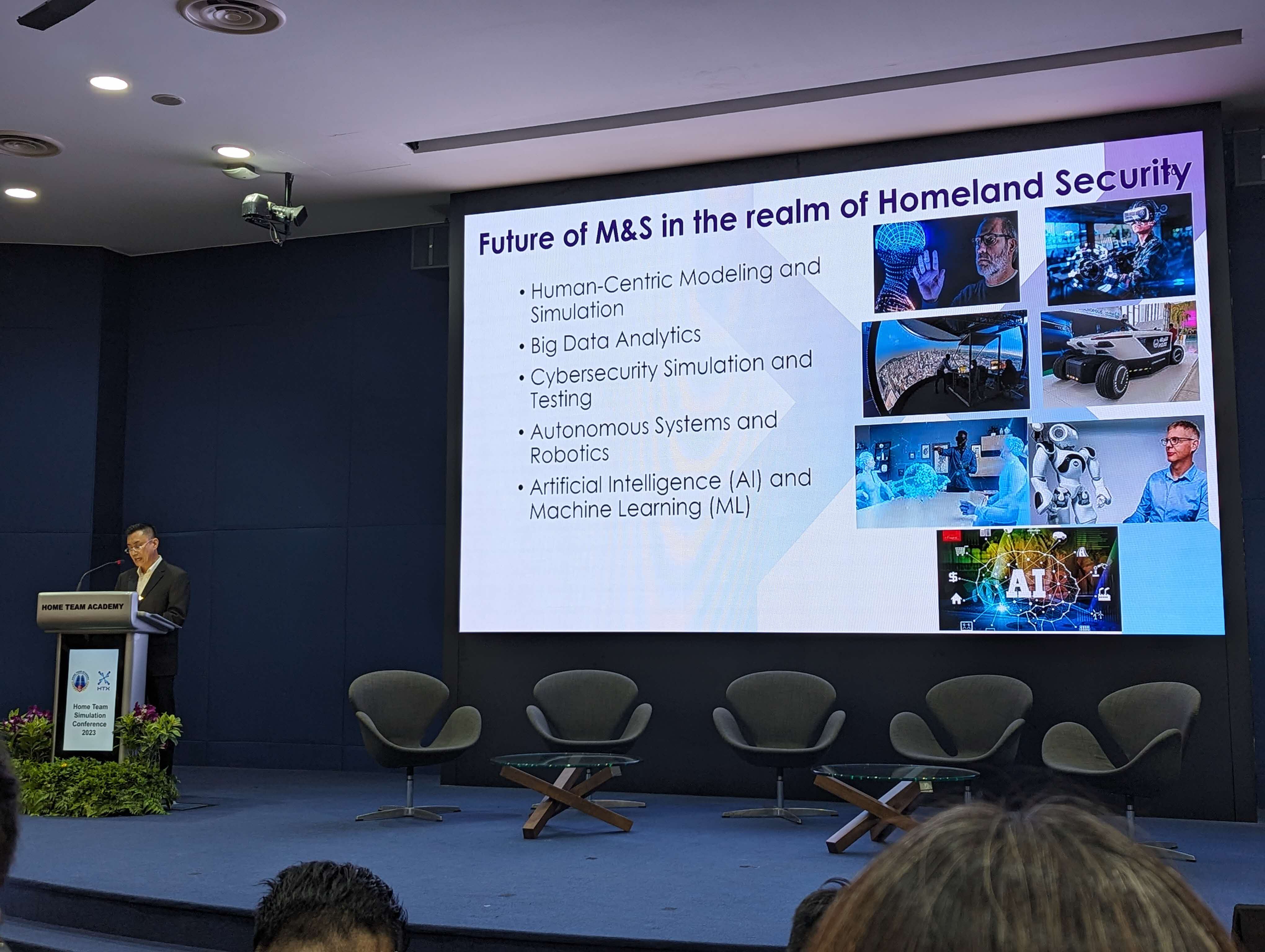 Mr Ying Meng Fai discussing the future of modelling and simulation. (Photo: HTX)
Mr Ying Meng Fai discussing the future of modelling and simulation. (Photo: HTX)
What can we expect in the future? Meng Fai expects that the growth of Big Data and advances in fields like artificial intelligence will lead to the creation of ever-more realistic simulations of the real world. These will be useful for the Home Team to practise dealing with increasingly sophisticated adversaries like cybercriminals. Advances in simulations will also help the Home Team learn to manage complex robot behaviours. This will be especially important since multi-robot collaboration and human-robot teaming are expected to become more common in the future.

![[FEATURED NEWS] Taking SCDF training to the next level with XR and VR](/Cwp/assets/htx/images/listing-card-placeholder.png)